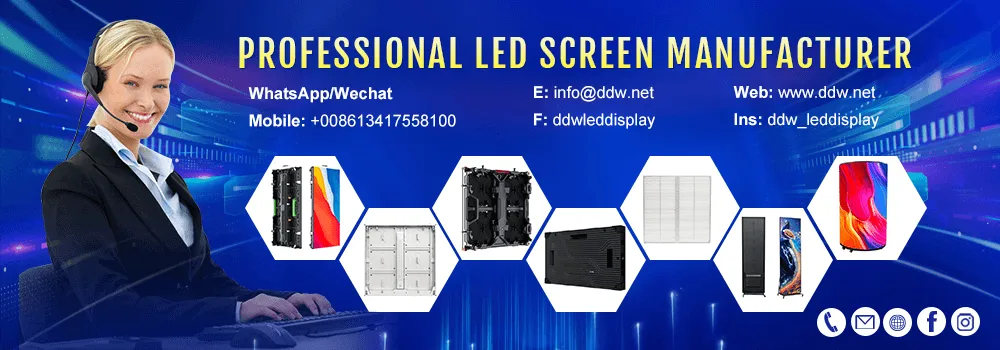How to do a good job of moisture-proof work in rainy weather while maintaining good heat dissipation in a high-temperature environment has become a thorny problem for outdoor LED displays. So how do we do a good job of cooling the LED display?
Reading volume: 2087
Release time :2023-04-13
Estimated reading time:
Subscription:0
How to do a good job of moisture-proof work in rainy weather while maintaining good heat dissipation in a high-temperature environment has become a thorny problem for outdoor LED displays. So how do we do a good job of cooling the LED display?
With the development of the economy and the continuous progress of the society, LED screens are widely used in daily use. Summer is the biggest challenge for outdoor LED screens in a year. Humid and high temperature weather makes LED screens confront the natural contradictions of moisture resistance and heat dissipation. How to do a good job of moisture-proof work in rainy weather while maintaining good heat dissipation in a high-temperature environment has become a thorny problem for outdoor LED displays. So how do we do a good job of cooling the LED display?
Summer is coming, for the LED display, in addition to lightning protection, but also pay attention to the high temperature weather in summer, especially the outdoor LED display. In some provinces and cities, the outdoor temperature is sometimes as high as 38°, 35° in summer, and the LED display is still working non-stop. Excessive temperature will cause it to malfunction. How should we choose cooling equipment for it in this hot summer?
As we all know, there are tens of thousands of light tubes in the LED display screen, the internal temperature is high, and the screen is installed outdoors. In summer, the temperature is higher and needs to be cooled. In order to ensure the long-term stable operation of outdoor LED displays, heat dissipation design is the most important thing. Heat dissipation is to discharge the heat and hot air generated by the LED display due to work in time to keep the air temperature in the LED display and the operating temperature of the device within the normal required range.

If your LED display is installed against the wall, it depends on how much the display can protrude. If it can protrude one meter from the wall, it is recommended to choose the fan according to the size of the area. The fan is installed at the screen. The top of the side is arranged in sequence. If the display screen you bought is an 80-square-meter ph16 outdoor full-color LED screen, it means that the fan you bought needs 6 axial flow fans with a diameter of about 600mm. The fan is to pump air outside. The kind, and when installing the fan, ensure that there is a net inside, so as to prevent the technicians who repair the display from sucking clothes and other things into the display and causing personal injury. In order to be waterproof, an aluminum-plastic plate should be placed outside Install aluminum alloy louvers on the air outlet of the blower fan on the top.
The wall-mounted display screen can also be equipped with an air conditioner. It is necessary to ensure that the host of the air conditioner has a place to put it, so as not to affect the overall appearance of the wall. There are requirements for the selection of air conditioners. Generally, 1.5P, 2P and 3P air conditioners are the most used. In northern cities, 12 square meters of 1P air conditioners are used; in southern cities, 9 square meters of 1P air conditioners are used. If the area of the LED outdoor display is relatively large, the air conditioner can be customized directly by the manufacturer, and if the area is not large, it should be purchased in a specialty store, but the display cooling air conditioner has the function of compensation for incoming calls.
If the installation method of the LED display is to use a column, it is best to use a fan to dissipate heat. The fan is installed on the aluminum-plastic panel on the back of the large screen. Rainwater does not enter the display screen. If it is a double column, open a few louvers in the middle of the double column. The louver is the air inlet, and the fan above is the exhaust port, so that complete air convection can be formed to improve the heat dissipation effect. better.
proper cooling is essential for the long-term stable operation of outdoor LED displays during the hot summer months. Fans and air conditioners can be effective tools to dissipate heat, but it's important to choose the right equipment for your specific display size and installation method. Additionally, it's crucial to ensure that all cooling equipment is installed safely and securely to prevent personal injury and damage to the display. By taking these steps, you can help extend the lifespan of your LED display and ensure that it continues to function optimally even in the hottest weather.

By continuing to use the site you agree to our privacy policy Terms and Conditions.